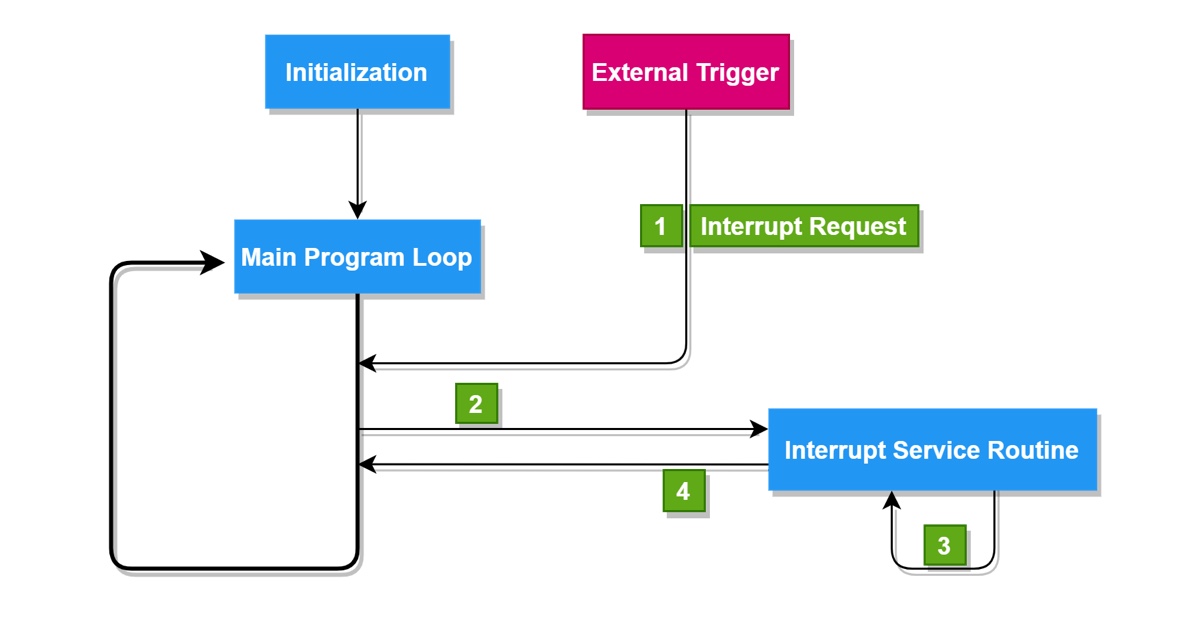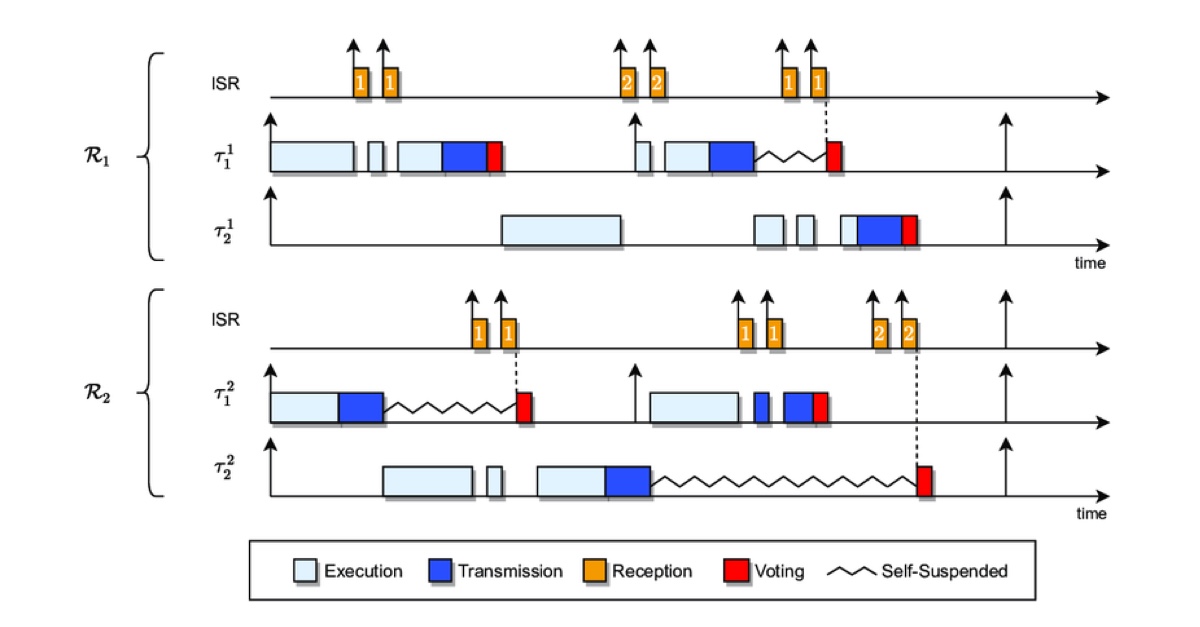Solutions
Published
14 November 2025
Written by Yunus Unal Mechatronics Engineer and Content Specialist
Yunus is a mechatronics engineer with a background in 5G mobile communications and intelligent embedded systems. Before joining TKO and ipXchange, he developed and tested IoT and control-system prototypes that combined hardware design with embedded software. At ipXchange, Yunus applies his engineering knowledge and creative approach to produce technical content and product evaluations.
Why RTOS Configuration Matters in Embedded Systems
Real-time operating systems (RTOS) are popular in embedded system design for enabling multitasking and real-time responsiveness. However, in small microcontrollers with limited RAM, memory is often the first bottleneck. Each RTOS task and object consumes memory, so poor configuration can quickly exhaust the available RAM. Teams adopt an RTOS in embedded system designs to get deterministic scheduling and cleanly partitioned work, so deadlines are met while background tasks progress. An RTOS provides a stable architectural framework that improves portability and long-term maintainability.
On small MCUs, though, memory is the first constraint and most of it is dictated by your RTOS task configuration: every task reserves a control block and its own stack even while blocked, so “safety-margin” stacks and surplus queues/timers quietly consume kilobytes. For example, a typical RTOS kernel itself might only need a few kilobytes of RAM, but how the developer uses and configures the RTOS determines the true memory footprint. In fact, if an RTOS is used improperly, the memory footprint can balloon to unusable levels, even though the RTOS is not inherently heavy. This makes efficient RTOS configuration both a cost issue (allowing use of a smaller, cheaper MCU) and a stability issue (preventing crashes due to memory exhaustion).

Designing an RTOS in embedded system projects requires balancing real-time performance with tight memory constraints. By tuning task stacks, scheduling, and allocation strategies, engineers can enjoy the multitasking advantages of an RTOS without running out of memory.
Memory Overhead Challenges in RTOS Based Designs
Over allocating task stacks “just to be safe” is the fastest way to starve a low memory embedded RTOS. In FreeRTOS, every task’s stack is reserved up-front and remains unavailable to others even while the task is blocked. Measure, don’t guess: enable stack watermarking and right-size from the observed worst case rather than handing every thread a kilobyte it will never touch. This alone can reclaim kilobytes without touching functionality.
Creating too many tasks for simple state-based logic multiplies that waste because each task brings a control block plus its own private stack. If several activities are mostly idle or periodic, fold them into a single state machine so one stack is reused across phases; you will cut RAM and reduce scheduler bookkeeping at the same time. FreeRTOS’s own guidance highlights the RAM cost of tasks and encourages lighter signalling in place of heavier objects where possible.

Context switching is not cost-free: a high tick rate and added overhead eat away useful CPU time. While the primary penalty is time, not bytes, more frequent kernel/Interrupt Service Routine (ISR) paths can push worst case stack footprints higher, forcing larger safety margins. Use only the tick rate your deadlines demand and consider tickless idle to suppress gratuitous wakeups.
Finally, remember that blocked work still “owns” its stack. Tasks stalled on I/O, queues, or software timers keep their reserved stacks while the idle task runs, so designs with many rarely active threads tie up RAM unnecessarily.
How to Reduce Task Memory Usage in RTOS for Embedded Devices
When using an RTOS on a memory-constrained device, several common design pitfalls can lead to excessive memory overhead.
Over-allocating task stack sizes “just to be safe”: each RTOS task needs its own stack, and inexperienced developers often give every task a large default stack regardless of actual need. This “safety margin” mentality wastes RAM. For instance, a simple LED-blinking task might be allocated 1024 bytes when it actually only needs perhaps 50–100 bytes. Such oversized stacks result in large regions of memory sitting unused in each task’s stack space.
Too many tasks for simple logic: an RTOS makes it easy to create many independent tasks, but each task carries overhead. Creating a new task for every minor function can dramatically increase memory usage. Seasoned developers note that too many tasks not only add CPU context-switching overhead but consume lots of RAM for stacks and OS data structures. Often, simple state-based logic, or combining related functions into a single task, can accomplish the same work with much lower memory cost.
Context switching and idle overhead: Every RTOS tick interrupt and context switch requires saving and restoring registers, which uses stack space (often on a common interrupt stack). A high tick rate or very frequent context switches can slightly increase the peak stack usage in interrupt handlers and the scheduler. While the CPU time cost is the bigger issue, inefficient scheduling can indirectly force higher stack usage. For example, if the RTOS tick is too frequent, the idle task (or tick handler) runs more often, potentially needing a larger stack or causing more stack usage in ISR routines.
Blocking tasks holding memory: In an RTOS, tasks often block on I/O or delays, but their stack memory remains allocated even when they are waiting. If you create many tasks that spend most of their time blocked (e.g. waiting for a timer or sensor input), you have a lot of stack space tied up in tasks that are idle. As one RTOS expert points out, all the stack memory of tasks that are not actively running at a given moment is essentially wasted, since it cannot be used by other tasks. For example, if five tasks each have 500 bytes of stack but are idle most of the time, that’s 2.5KB of RAM locked away in inactive stacks. Similarly, using RTOS software timers or delaying tasks for long periods means the idle task runs more, but memory is still allocated for those blocked task stacks.

Overuse of RTOS objects: Every mutex, semaphore, queue, or timer in an RTOS uses some memory for control structures. Creating a multitude of synchronization objects (especially if they are not all truly necessary) adds up. Each RTOS object might only consume a small control block, but in very constrained applications these can accumulate into significant RAM usage.
Static vs Dynamic Allocation in RTOS: Making the Right Call
Static allocation buys determinism. If you pre-reserve stacks and control blocks, the system never asks a heap for memory at runtime, eliminating fragmentation and allocation-failure paths altogether. FreeRTOS explicitly supports full static creation of tasks/queues/timers, so peak RAM is known at build time and timing remains predictable, ideal for tight budgets and long uptimes.
Dynamic allocation earns its keep when features are conditional. Spinning up infrequently used tasks (diagnostics, firmware-update, provisioning flows) only when needed can lower the average footprint, then return RAM to the heap when the feature ends. FreeRTOS allows static and dynamic to coexist in one application, so you can create core objects statically and use the heap for optional ones.
In practice, the winning strategy is hybrid: static for core, dynamic for the edge. Create the scheduler, primary and inter-task channels statically so the baseline is fixed and analysable and reserve dynamic allocation for short-lived tooling tasks.
Summary: Efficient RTOS Use in Embedded Design
Memory in embedded systems is precious. The use of an RTOS is a crucial step in getting code working in embedded devices, but RTOS configuration must be memory-efficient. The key takeaways for embedded design engineers include:
- Do your homework on stack sizing. Measure and adjust each task’s stack to fit its needs, instead of using one-size-fits-all values. This avoids wasted space and prevents stack overflow by design.
- Keep the task count lean. Use as few tasks as practical for the design. Every unnecessary task you eliminate is one less stack and control block using memory. Combine functionality in tasks when it makes sense, and avoid the temptation to create a new task for every small function.
- Optimize memory allocation strategy. Prefer static allocation for the core system to remove uncertainty and fragmentation. Use dynamic allocation carefully for optional components, and consider memory pools or other techniques to mitigate fragmentation if you do allocate at runtime. Plan your memory layout, knowing which sections of RAM hold what, and leverage linker configurations to place buffers or stacks optimally.
- Trim the RTOS fat! Disable OS features and objects that are not needed (timers, large priority ranges, extensive debug info) to reduce the baseline footprint. Use lightweight synchronization methods to save bytes when possible.
- Profile and iterate. Treat memory optimization as an iterative process. Use RTOS tools to monitor high stack marks, heap usage and object usage. Each iteration of measurement and tuning can reveal new opportunities to save memory.
By following these embedded RTOS best practices, developers can ensure their real-time systems run within memory limits without sacrificing performance. Efficient RTOS configuration is just as important as efficient scheduling – it enables the product to do more with less, keeps costs down (by using smaller memory chips) and boosts stability. With careful attention to memory usage from the start, developers can take full advantage of the RTOS’s capabilities even in the most resource-constrained embedded devices.
You must be signed in to post a comment.
Comments
No comments yet